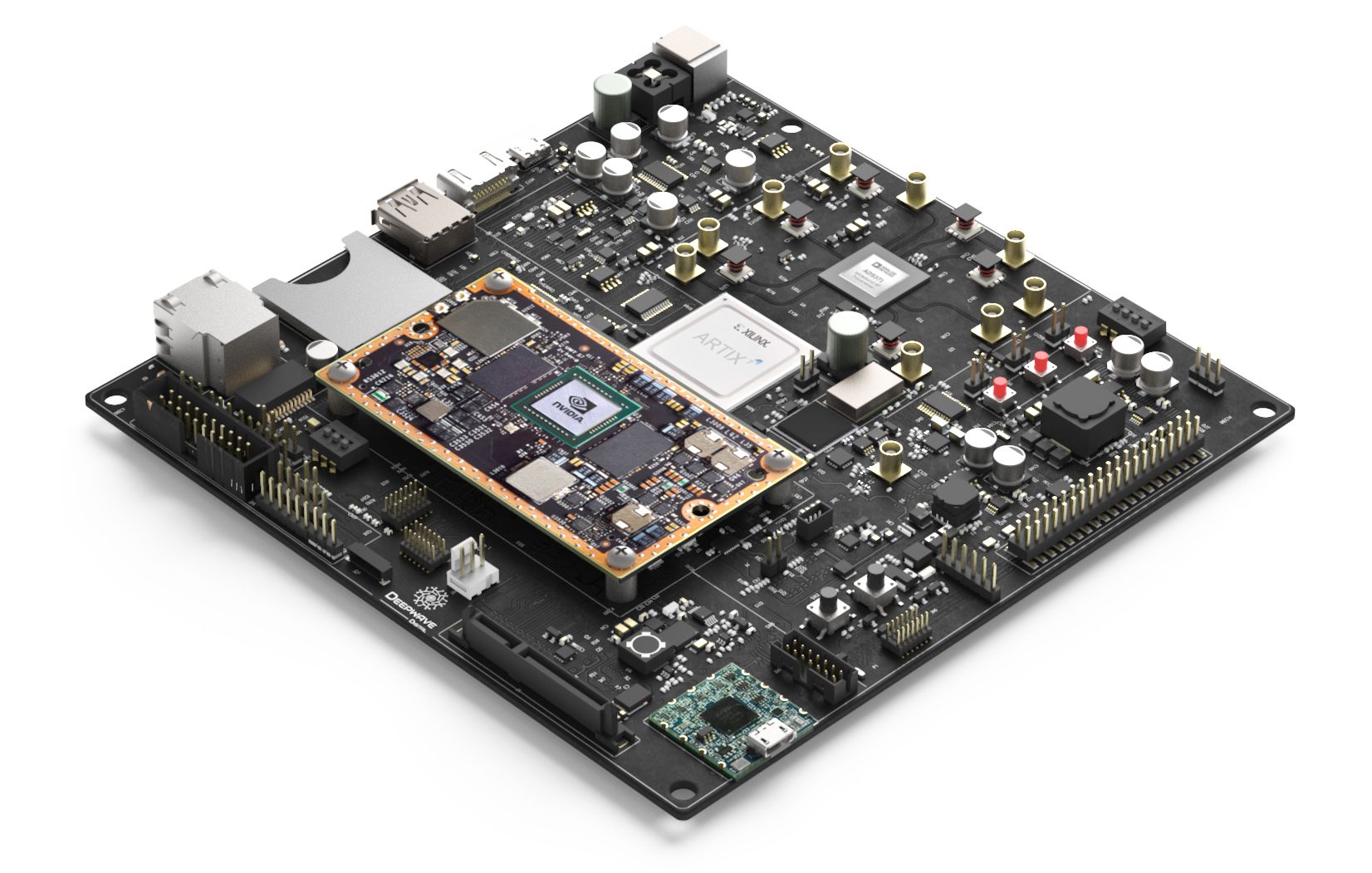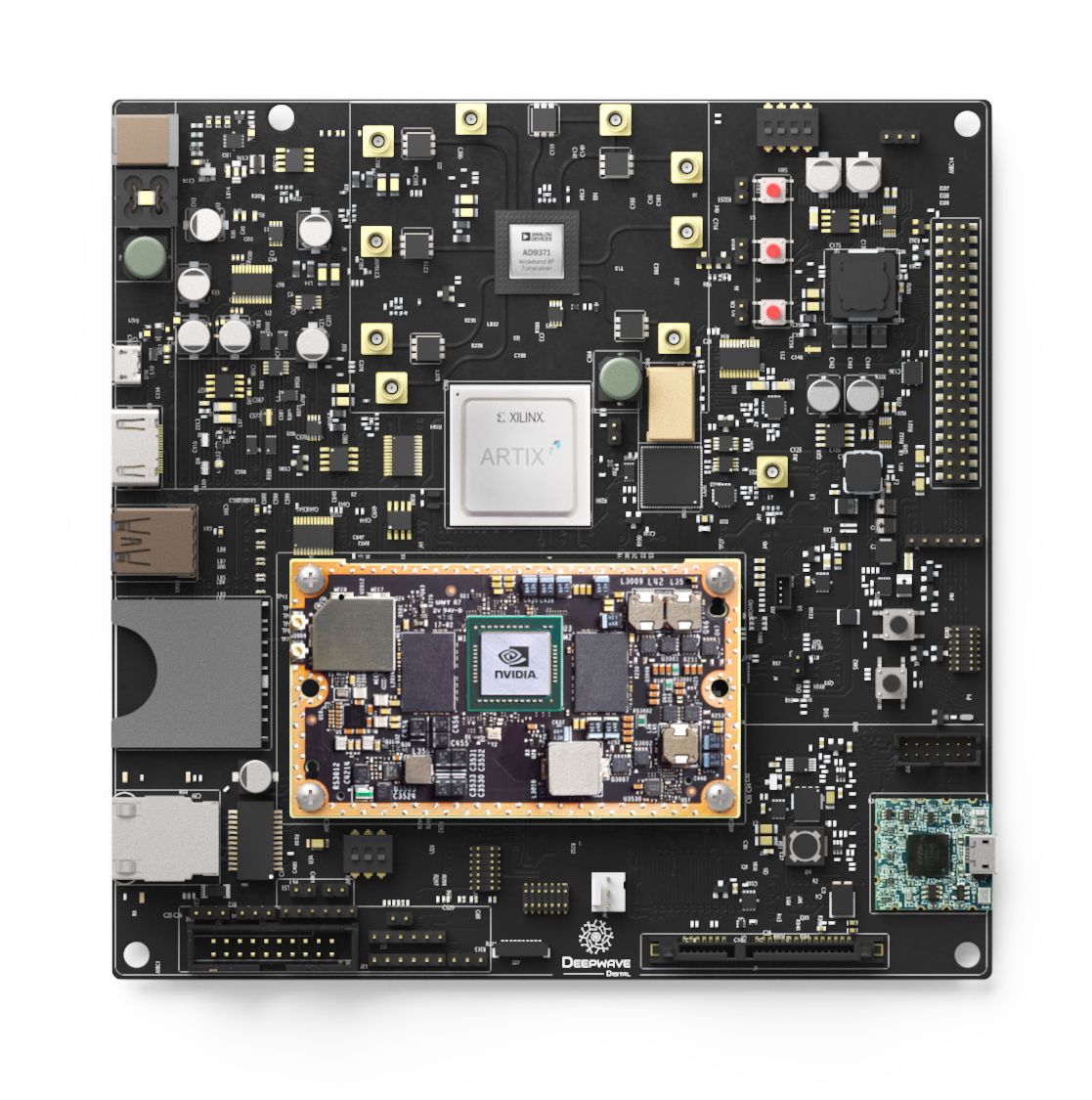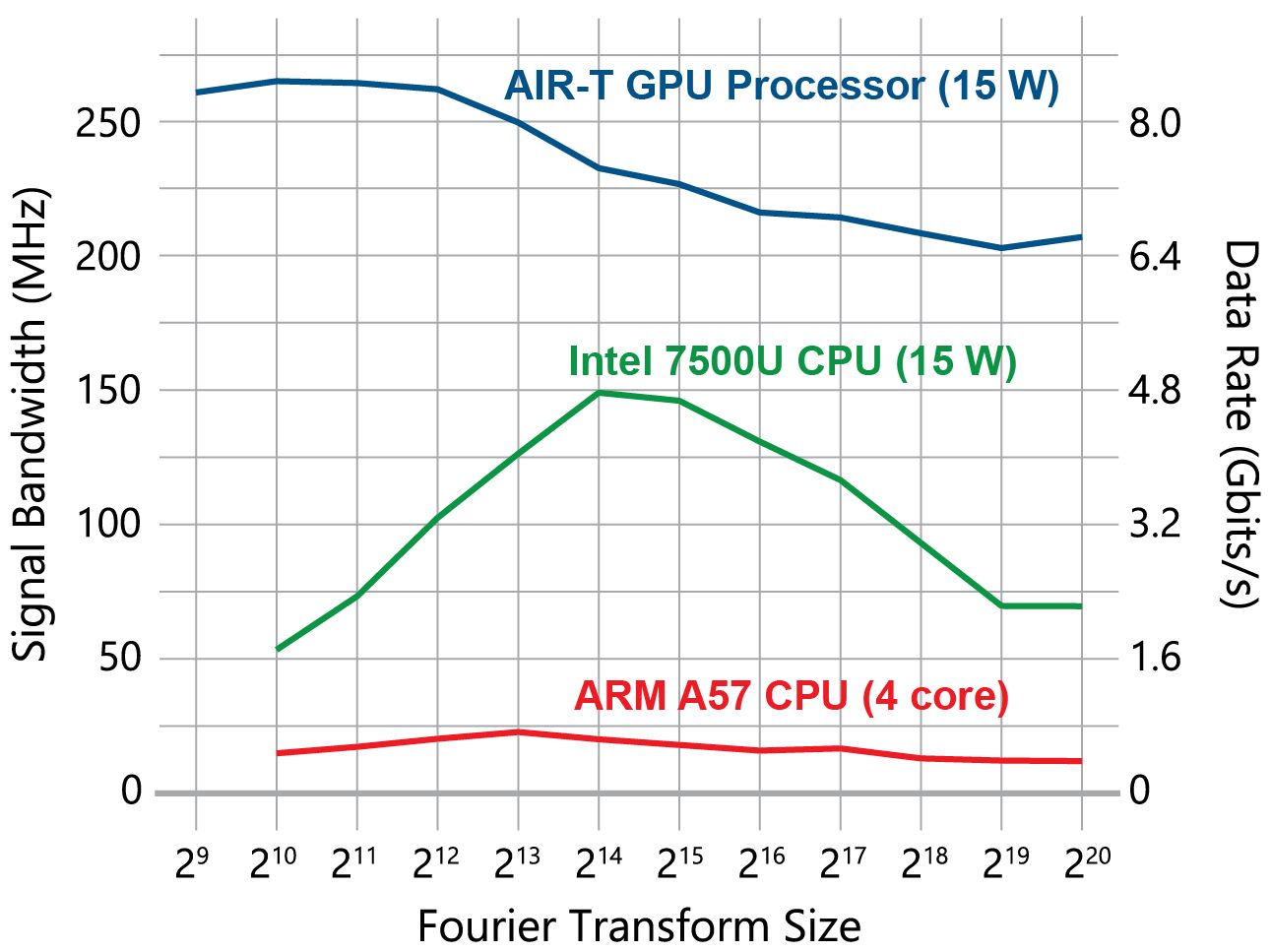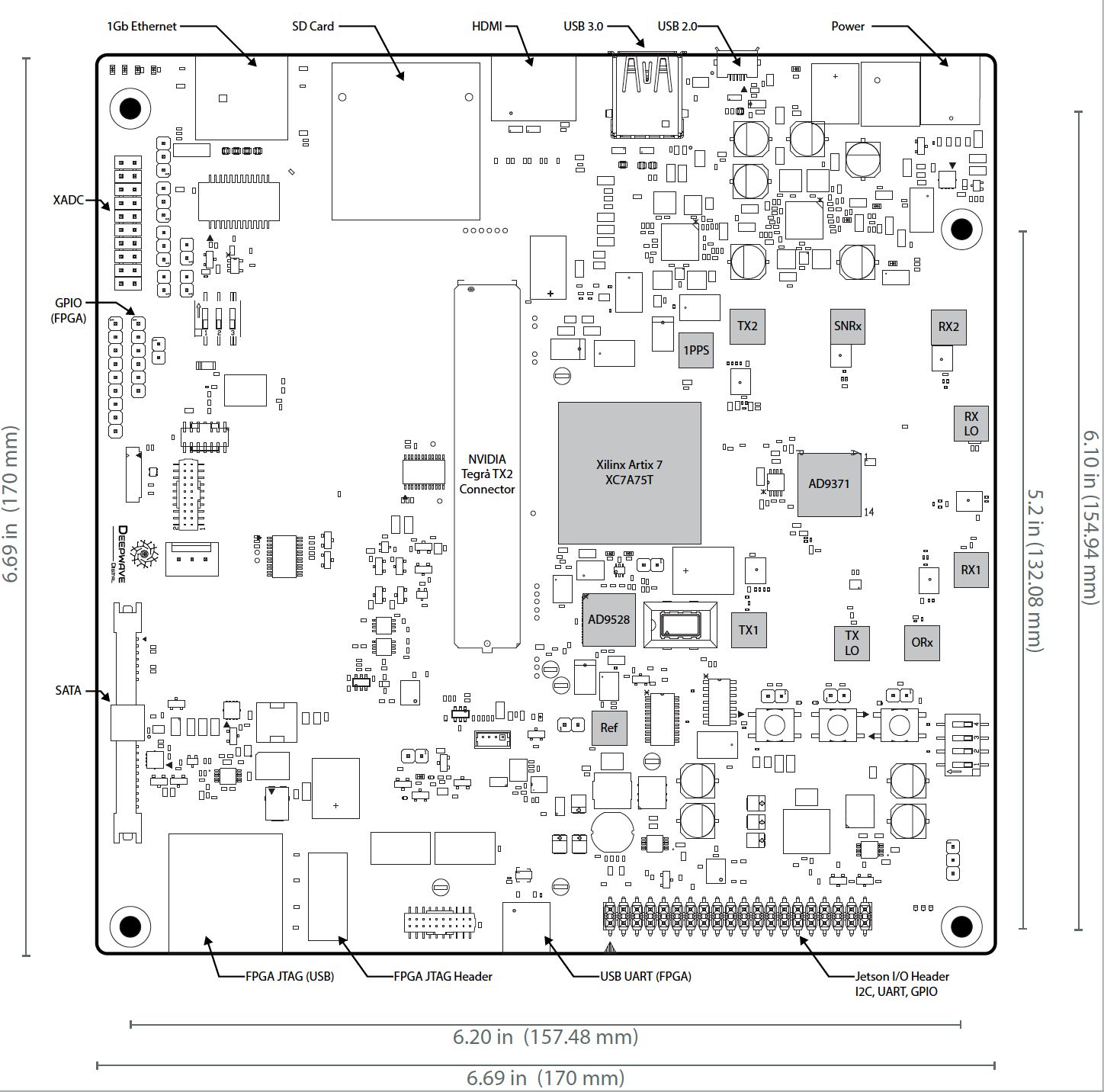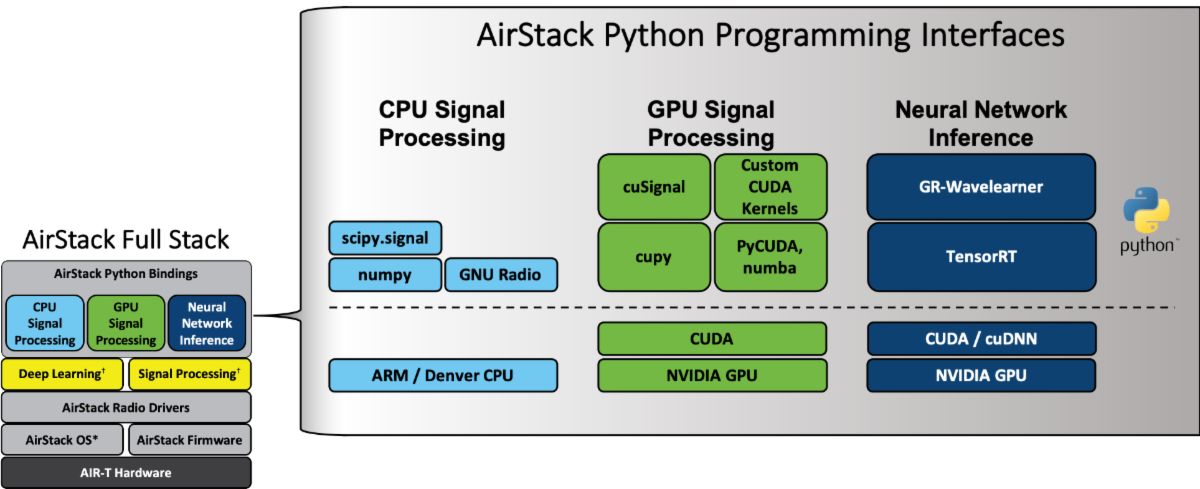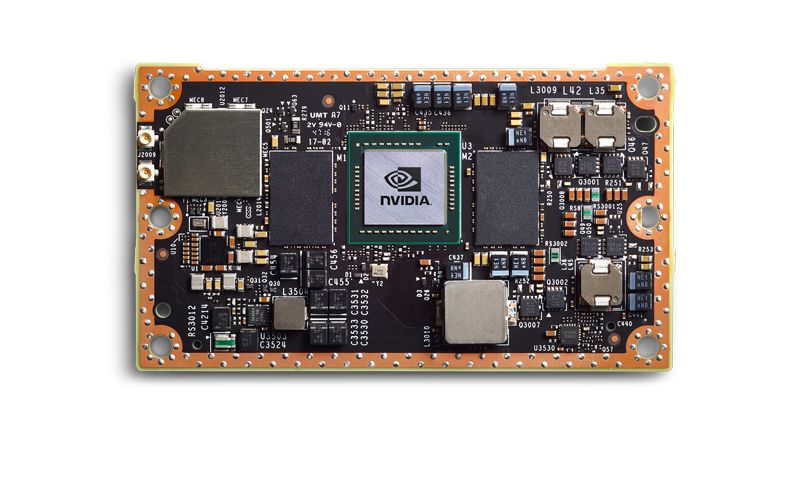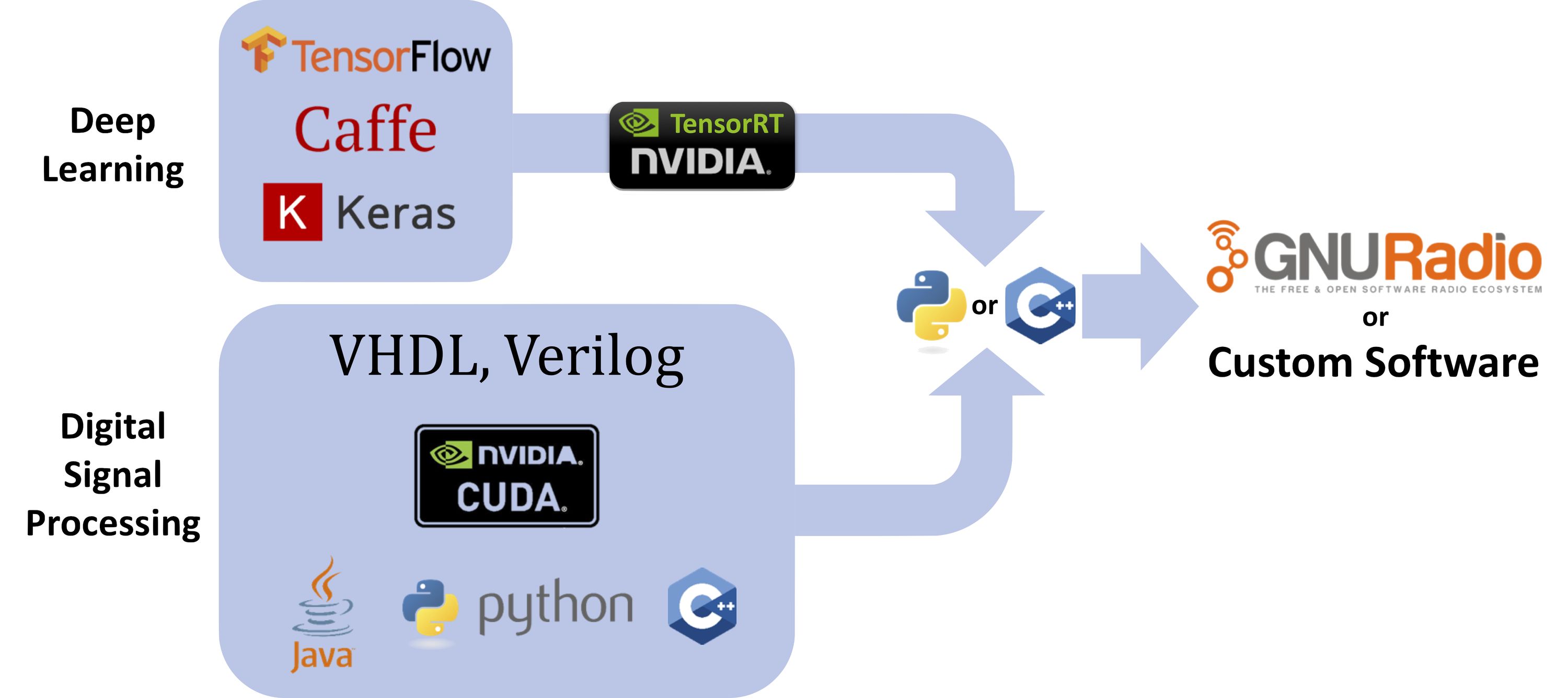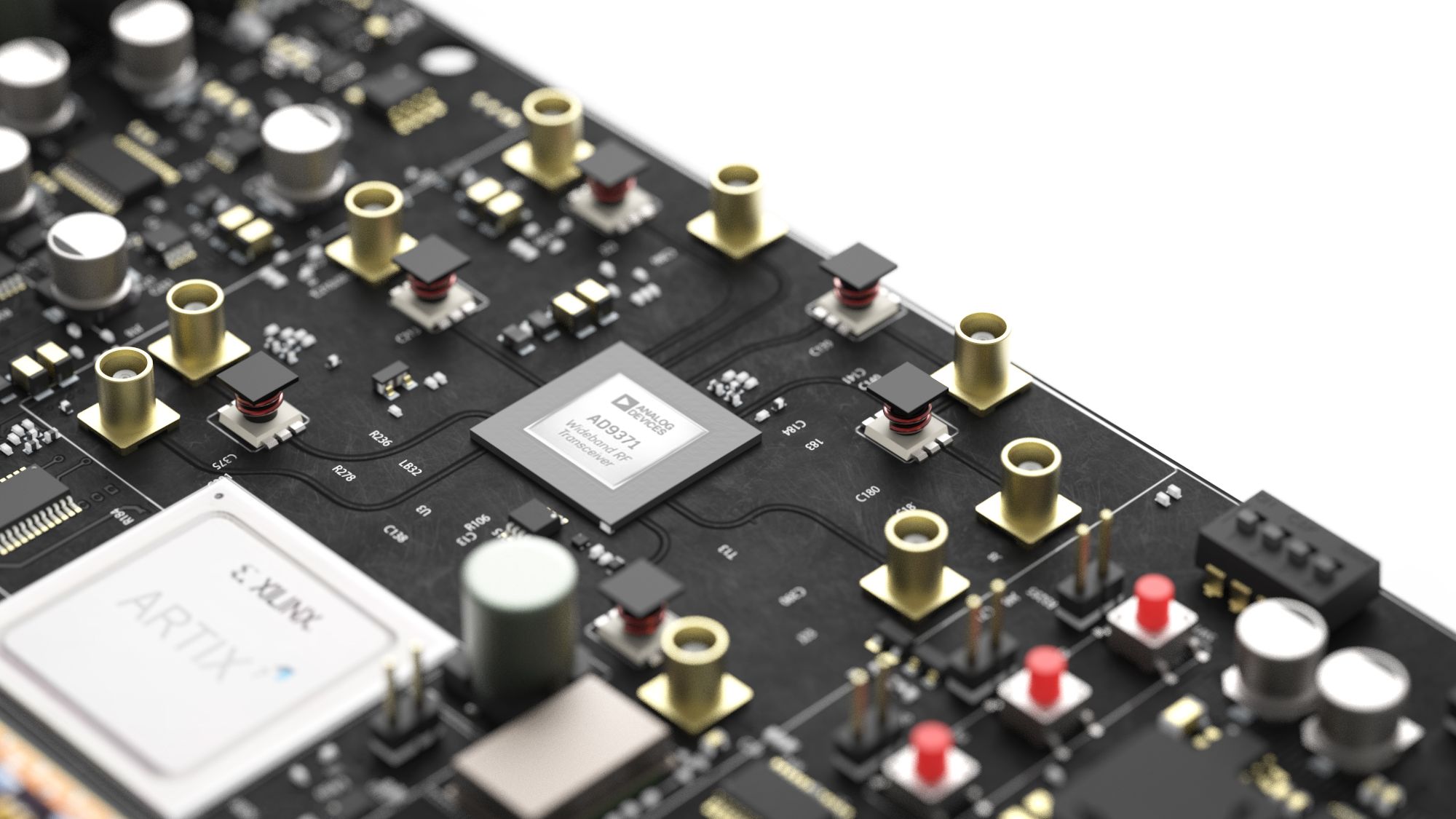NVIDIA has officially backed the AIR-T project. Read the full update here.
Why build tomorrow’s tech with yesterday’s signal processing tools? The Artificial Intelligence Radio - Transceiver (AIR-T) is a fully integrated, single-board, artificial intelligence equipped, software defined radio platform with continuous frequency coverage from 300 MHz to 6 GHz. Designed for new engineers with little wireless experience to advanced engineers and researchers who develop low-cost AI, deep learning, and high-performance wireless systems, AIR-T combines the AD9371 RFIC transceiver providing up to 2 x 2 MIMO of 100 MHz of receiving bandwidth, 100 MHz of transmitting bandwidth in an open and reprogrammable Xilinx 7 FPGA, with fast USB 3.0 connectivity.
The AIR-T has custom and open Ubuntu software and custom FPGA blocks interfacing with GNU Radio, allowing you to immediately begin developing without having to make changes to existing code. With 256 NVIDIA cores, you can develop and deploy your AI application on hardware without having to code CUDA or VHDL. Freed from the limited compute power of a single CPU, with AIR-T, you can get right to work pushing your telecom, defense, or wireless systems to the limit of what’s possible.

AIR-T board
Three Integrated Processors
Deepwave’s AIR-T is the first software-defined radio (SDR) with embedded high-performance computing. The AIR-T lowers the price and performance barriers to autonomous signal identification, interference mitigation, and much more. The AIR-T allows for a fully autonomous SDR by giving the AI engine complete control over the hardware. Whether your background is in electrical engineering, applied physics, or a related field, AIR-T will open up new possibilities for your work. It does this by uniquely integrating three digital processors that provide the functionality needed for any signal processing application:
- FPGA for strict real-time operations
- GPU for highly parallel processing
- CPU for control, I/O, DSP, and software applications
This unique combination brings you the worlds of high-performance computing (HPC), artificial intelligence, deep learning, and advanced graphics and rendering on one embedded platform. The system has the versatility to function as a highly parallel SDR, data recorder, or inference engine for deep learning algorithms. The embedded GPU allows your SDR applications to process bandwidths greater than 200 MHz in real-time.
Features & Specifications
- Software-defined Radio
- Analog Devices 9371 2x2 MIMO transceiver
- 2 x RX channels (100 MHz each)
- 2 x TX channels (100 MHz each)
- Auxiliary RX channels*
- NVIDIA Jetson TX2 for processing
- 256 NVIDIA core integrated GPU
- 6 CPU cores
- Dual-core NVIDIA Denver2
- Quad-core ARM Cortex-A57
- 8 GB CPU/GPU shared memory
- Xilinx Artix-7 FPGA
- Connectivity
- USB 2.0 and 3.0
- 1 Gig Ethernet
- HDMI display port
- High-speed digital I/O (GPIO/UART)
- 1 PPS & 10 MHz reference input
- External LO input
- Storage
- 32 GB of on-board storage
- External USB
- SATA
- SD card
- Software
- SD card w/ Ubuntu 16.04
- SoapySDR - Port existing GNU Radio applications within minutes
- Custom GNU Radio blocks to easily deploy your neural network or high-performance applications
- Build you own custom software using our hardware drivers
- Use Python or C++ to easily program the GPU
- No VHDL/Verilog. No need to learn how to program an FPGA (but you can if you want to!)
- Physical
- Form factor: Mini-ITX
- Dimensions: 170 mm × 170 mm x 35 mm (6.7" × 6.7" x 1.4")
- Weight: 0.35 kg (0.8 lbs)
- Power: 22 Watts (14 Watts with reduced GPU cores)
* Can use either Observation or Sniffer at one time; utilizes one of the RX channels

AIR-T functional mechanical drawing

software stack
What’s in the box?
- AIR-T board
- four MCX-to-SMA cables
- SD card with customized Ubuntu OS and software
- Getting started tutorial
- Power supply
Comparisons
| AIR-T | Ettus E310 | Ettus N310 | LimeNET Mini | Epiq Maveriq |
| GPU for Signal Processing | 256 Core NVIDA Jetson | - | - | - | - |
| Deep Learning Capable | TensorFlow, Caffe, Keras | - | - | - | - |
| CPU Cores | 6 (ARM A57, Denver2) | 2 (ARM A9) | 2 (ARM A9) | 2 (Intel i7-7500U) | 4 (Intel Atom) |
| RAM (GB) | 8 | 1 | 1 | 32 | 8 |
| Internal Storage (GB) | 32 | - | - | 512 | Up to 1000 |
| Tx Bandwidth > 60 MHz | 100 MHz | - | 100 MHz | 61.4 MHz | - |
| Rx Bandwidth > 60 MHz | 100 MHz | - | 100 MHz | 61.4 MHz | - |
| Max Bandwidth for Onboard Processing (MHz) | >200 | 10 | Not Published | Not Published | Not Published |
| USB 3.0 | 1 | - | - | 2 | - |
| SATA | 1 | - | - | 1 (Internal Storage) | 1 (Internal Storage |
| 1 Gb Ethernet | 1 | 1 | 1 | 1 | 1 |
| Wi-Fi | 1 | - | - | 1 | - |
| Bluetooth | 1 | - | - | 1 | - |
| Display Out | HDMI (4K) | - | - | HDMI (4K) | - |
| Max Power Consumption (W) | 22 (estimated) | 6 | 80 | Not Published | 14 |
| Price | $5,500 | $2,982 | $10,000 | $2,599 | Unavailable |
Overview Video
Use Cases
Wireless
With the AIR-T, you can use deep learning to maximize applications from Wi-Fi to OpenBTS. Pairing a GPU directly with an RF front-end means you don’t have to purchase an additional computer or server for processing. Just power on the AIR-T, plug in a keyboard, mouse, and monitor and you’re ready to go. Use GNU Radio blocks to quickly develop and deploy your current or new wireless system or, if you need more control, talk directly with the drivers using Python or C++. And for you superusers, the AIR-T is an open platform, so you can program the FPGA and GPU directly.
Satellite Communications
Communicating past Pluto is hard. With the power of a single-board SDR with an embedded GPU, the AIR-T can prove your concepts before you launch them into space. AIR-T lets you reduce development time and costs by adding deep learning to your satellite communication system. With the ability to program in Python and rapidly port existing code from GNU Radio, you can accelerate your existing applications within minutes. Yet, you can do a LOT more with the AIR-T. We are committed to having an open architecture. Meaning, you can program in Python, control the drivers with your a custom software, or program the FPGA directly. We anticipate customers developing at every level.
Ground Communications
There is a seemingly endless number of terrestrial communication systems, with more being developed every day. From high-power, high-frequency voice communications to 60 GHz millimeter wave digital technology, there are significant challenges in every band. As spectral density becomes more congested, we are nearing the end of the amount of information that can be passed over wireless systems using the same spectrum. AI can be used in order to maximize these resources. The AIR-T is well-positioned to easily and quickly help you prototype and deploy your wireless AI solution. From 300 MHz to 6 GHz the AIR-T covers the majority of commercial communication bands.
Video/Image/Audio Recognition
While the AIR-T was designed for wireless development, it can process any type of data. NVIDIA is a graphics processing powerhouse and their products, including the Jetson TX2, are known for their high-performance when it comes to video. With the AIR-T, you can combine the traditional uses of image and video processing with radio frequency. With USB 3.0 & 2.0, Gigabit Ethernet, and high-speed IO, there are many ways to bring data in and out of the AIR-T. You can attach additional sensors and allow the AIR-T to fuse the data together.
The AIR-T lets you demodulate a signal and apply deep learning to the resulting image, video, or audio data in one integrated platform. For example, you used to need multiple devices to directly receive a signal that contains audio and then perform speech recognition. The AIR-T integrates this hardware into one easy-to-use package. From speech recognition to digital signal processing, the integrated NVIDIA GPU provides the horsepower needed for your cutting edge application.
Software Flow
Shipping & Fulfillment
Now that the crowdfunding campaign is over and all backers received their AIR-T units, we’re happy to continue stocking AIR-T through Crowd Supply. Orders placed now ship within three business days.
Get in Touch
If you have any questions or simply want to find out more about AIR-T or the Deepwave team, please don’t hesitate to get in touch, or check out the latest news on our blog.












![MickMake: A whole lot beefier than other [SDRs] I've seen around... if you're a radio-head, then this one would interest you.](/img/c136/e66d5561-3a57-4806-8651-a0a98283c136/mick-make-logo-square_jpg_press-logo.png)





![diarioelectronicohoy: [AIR-T] es una radio definida por software (SDR, por sus siglas en inglés) que integra funcionalidades de inteligencia artificial.](/img/d980/98410f4e-2c41-4b98-9d87-921ec4dfd980/diarioelectronicohoy_png_press-logo.png)








